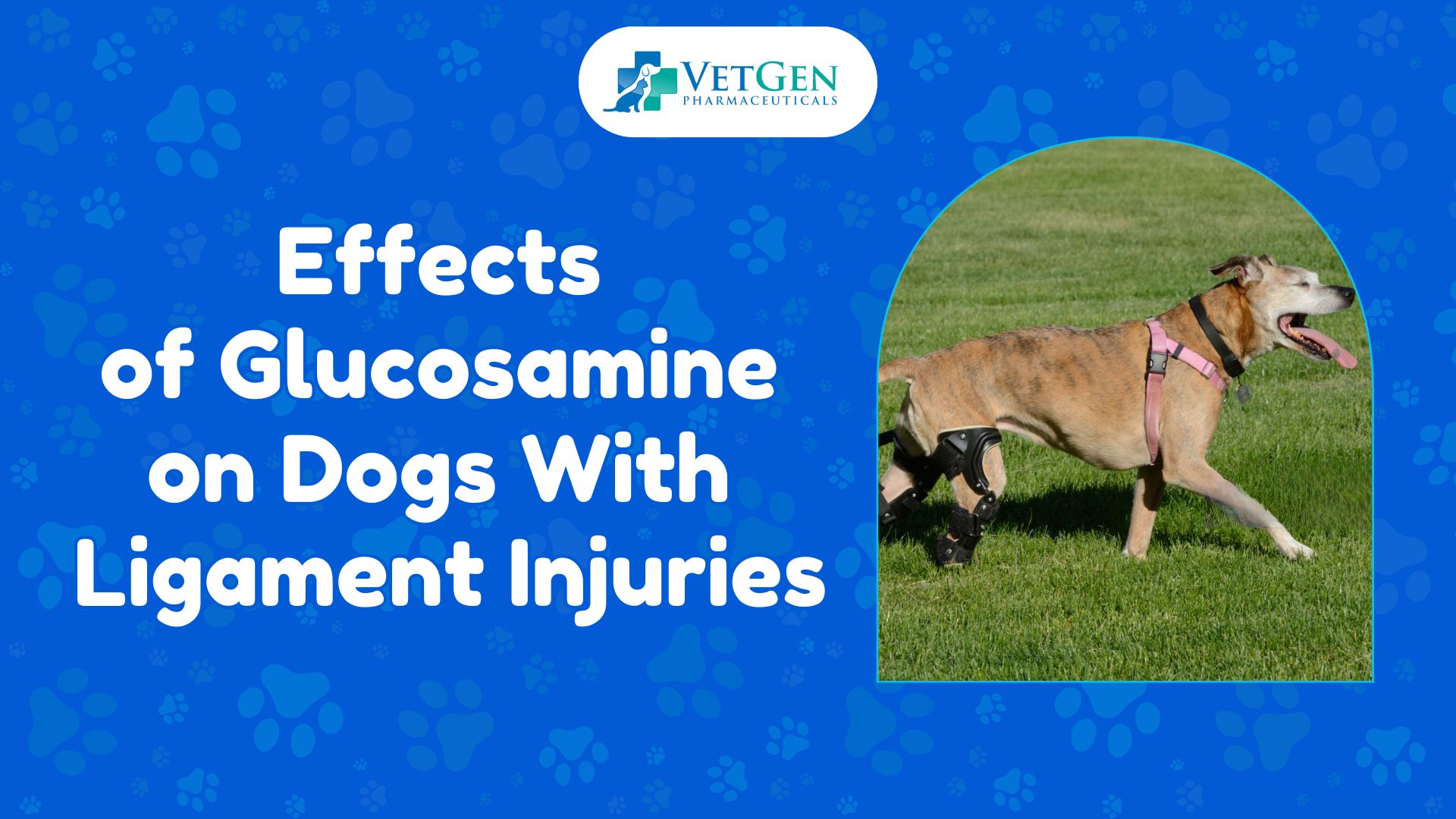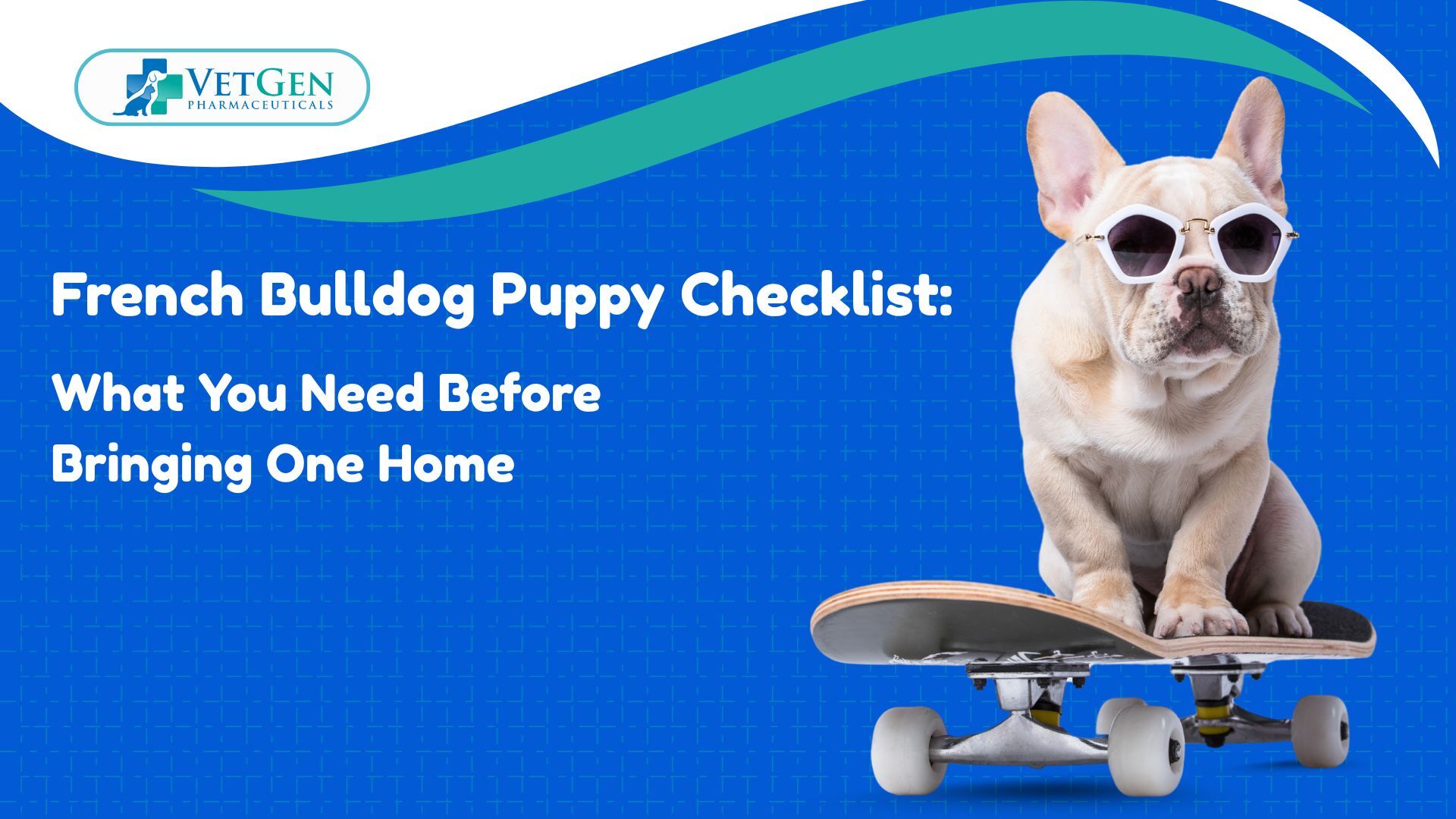Ligamentous injuries in dogs typically occur due to twisting, skidding, turning awkwardly, or overstretching. If your four-legged buddy has been limping, it could signify a cruciate ligament injury.
Besides immediate veterinarian attention, your pup can also benefit from glucosamine supplements. Let’s take a closer look at how glucosamine helps.
What Is Glucosamine and How Does It Work in Dogs?
Glucosamine is a natural chemical found in the cartilage, the tissue cushioning your pet’s joints. In the market, it is found as a supplement in the form of glucosamine sulfate, N-acetyl glucosamine, and glucosamine hydrochloride.
Since glucosamine can stimulate cartilage growth in the body, it slows arthritis progression in dogs. It also improves mechanical joints’ functioning, reducing discomfort and stiffness. Read more about glucosamine for dogs here.
The Science Behind Glucosamine's Effectiveness in Treating Ligament Injuries in Dogs
According to a study published in the Journal of the American Veterinary Medical Association, glucosamine-containing formulations offer a ‘moderate level’ of comfort to dogs. Its effectiveness is similar to some prescription drugs.
Although the compound’s mechanism of action is not well known, research shows that it improves the production of glycosaminoglycans, which are integral to cartilage formation. Glucosamine also combines with chondroitin sulfate in a dog’s body to give it more flexibility and mobility.
At the moment, there’s not enough research to explain how well glucosamine works. But an Open Veterinary Journal article said that glucosamine is “commonly recommended by veterinarians as an alternative for treating osteoarthritis” because it is gentler for dogs who cannot tolerate the harsh effects of NSAIDs.
Common Ligament Injuries in Dogs and How Glucosamine Can Help
The most common ligament injury in dogs is the cranial cruciate ligament rupture. Other injuries include joint sprains, meniscal tears, and luxating patella.
Glucosamine can help manage these injuries in multiple ways. First, it can reduce joint inflammation, one of the top causes of poor joint health.
Second, it increases joint mobility by thickening the synovial fluid, a lubricant preventing friction during joint movement. More importantly, glucosamine aids cartilage production, which strengthens the joints.
Can Glucosamine Prevent Ligament Injuries in Dogs Beforehand?
Glucosamine doesn’t necessarily ‘cure’ a ligament injury. But it can help prevent one.
Glucosamine supplements prevent wear and tear of canine joints. This way, they make the joints strong enough to bear minor injuries without losing mobility.
The thickening of synovial fluid further helps prevent joints from rubbing against each other, decreasing the risk of ligament injuries.
Glucosamine vs. Traditional Treatment for Ligament Injuries in Dogs
Surgery is often the last resort for a dog with a ligament injury. There are two types of surgical interventions in this regard; external capsular stabilization and TightRope procedure.
Additionally, the vet may prescribe anti-inflammatory agents to keep joint inflammation at bay. Chondroprotective agents, like chondroitin, further promote joint health, while post-operative exercises can help a dog gain mobility.
While these procedures are invasive and costly, glucosamine tends to be the cheaper and less hands-on approach. But remember that glucosamine for dogs mainly helps manage or prevent ligament injuries rather than curing them altogether.
How to Administer Glucosamine to Your Dog For Optimal Results
You can give your dog glucosamine orally as a chewable tablet, powder, liquid, or capsule, with or without food. But if your dog vomits when given medicine on an empty stomach, you should give it glucosamine with food.
Glucosamine takes a few weeks to show full effects. But you’ll see minor improvements in your pet after a few days.
The right dosage will differ across dogs based on their body weights. Typically, you should give 15 to 30 mg per kg of your dog’s weight. Follow the instructions on the supplement label to measure the right dosage.
For instance, the label on the Vegten Pharmaceutical glucosamine for dogs recommends half a tablet for dogs up to 10 lbs and one tablet for dogs weighing 11 to 50 lbs.
Natural Alternatives to Glucosamine for Treating Ligament Injuries in Dogs
If your dog isn’t a huge fan of glucosamine, try these natural alternatives.
Turmeric
The active ingredient in turmeric, curcumin, helps lower inflammation and treat joint pain. Dr. Judy Morgan, the author of From Needles to Natural: Learning Holistic Pet Healing, recommends giving dogs “15 to 20 mg per pound of body weight.”
Fish Oil
Since fish oil is rich in omega-3 fatty acids, it can manage joint and hip discomfort in dogs. The following compounds in fish oil further reduce the inflammatory response and production of proteins that worsen joint conditions:
- Eicosapentatonic acid (EPA)
- Docosahexaenoic acid (DHA)
Hawthorn
If your dog suffers from arthritis, hawthorn can be a good natural supplement to add to its diet. Dr. Judy Morgan explains that hawthorn increases circulation in the body, ridding it of “toxins that can build up in the joints.”
Talk to your vet before administering any natural substance to your pet.
Real-life Success Stories of Dogs Benefitting From Glucosamine For Ligament Injuries
Researchers conducted a clinical trial of 35 dogs to assess the effectiveness of a combination of chondroitin sulfate and glucosamine hydrochloride. The results showed a significant pain reduction in dogs who took this combination.
Dog owners have also shared anecdotal evidence of glucosamine supplements’ efficacy in many canine forums. But most owners believe the supplement is better for older dogs than younger ones.
The Importance of Healthy Diet and Exercise for Supporting Glucosamine Treatment in Dogs with Ligament Injuries
Although glucosamine helps, it isn’t an all-in-one solution for managing ligament injuries. Your dog must follow a vet-recommended diet and follow a strict exercise regimen. It will help your pet build strength and gain mobility over time.
Safety and Side Effects of Glucosamine for Dogs with Ligament Injuries
Glucosamine is generally safe but may exhibit the following side effects:
- Fatigue
- Allergies, particularly in dogs with shellfish allergies
- Insomnia
- Excessive urination
- Excessive thirst
Since glucosamine is sugar-based, you should be wary about administering it to a diabetic dog. It’s best to consult a vet beforehand.
Conclusion
Glucosamine can help manage arthritis, ligament injuries, and joint conditions in dogs. When selecting glucosamine for dogs, only buy supplements from a reputable manufacturer that follows the highest standards of quality and regulatory compliance.






